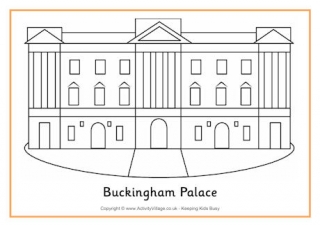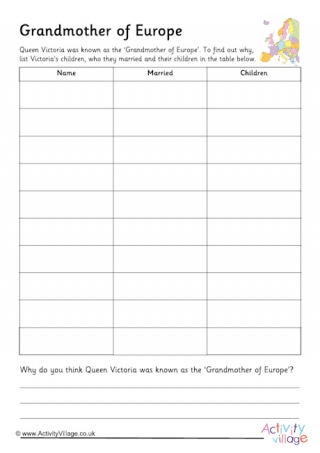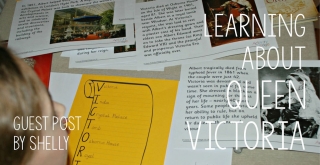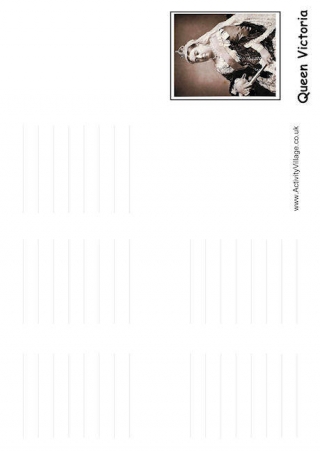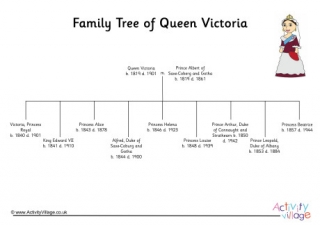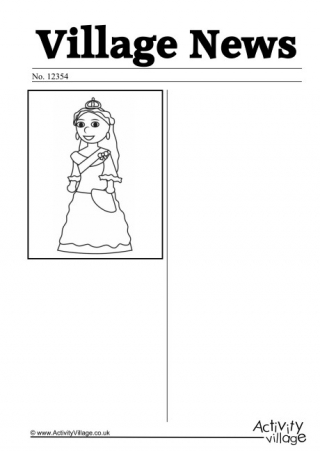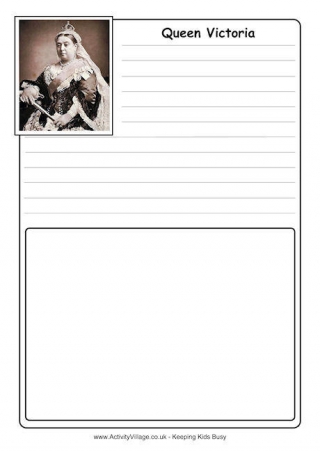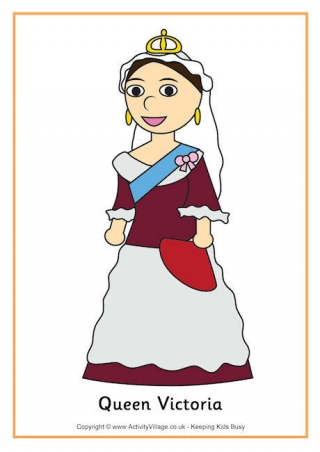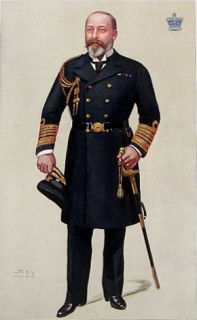Queen Victoria (1819–1901) was one of Britain’s longest-reigning monarchs. She took the throne, aged 18, and ruled until her death 63 years later – a period known as the Victorian Era. Victoria was a popular queen and her reign was a time of great advancement in science, industry and communications. Under her rule, the British Empire also doubled in size. Learn about this iconic queen and use our printable resources below to discover more.

Fun Facts
- Queen Victoria was often called the ‘Grandmother of Europe’ because eight of her nine children married into European royal families. These ties also helped to keep peaceful relations with Europe.
- By the time of her death, Victoria had 42 grandchildren and 37 great grandchildren.
- Lots of places around the world are named after Queen Victoria, including the Australian states of Queensland and Victoria, and Africa’s Victoria Falls and Lake Victoria.
- Victoria’s husband Albert brought many German Christmas traditions to Britain, such as decorating Christmas trees and sending Christmas cards.
Queen Victoria Quotations
“The important thing is not what they think of me, but what I think of them.”
“Great events make me quiet and calm; it is only trifles that irritate my nerves.”
“We are not interested in the possibilities of defeat; they do not exist.”
A Short Biography of Queen Victoria
Queen Victoria was born Princess Alexandrina Victoria at Kensington Palace in London in 1819, to Edward, the Duke of Kent, and Princess Victoria of Germany. Her mother called her ‘Drina’ but she preferred to go by her middle name.
Victoria’s father died when she was just eight months old, and she was raised by her mother and various tutors. She had no siblings and very little contact with other children. Instead, her best friends were her wooden dolls (of which she had over 130!) and her King Charles spaniel, Dash.
Victoria enjoyed painting and drawing, and she kept a journal for most of her life. She also spoke fluent German (her mother was German) and had knowledge of French, Italian and Latin.
At birth, Victoria was fifth in line to the throne and unlikely to become queen, but with the death of her father (and her cousins dying in childhood), she found herself taking the throne in 1837 at the age of 18, when her uncle William IV died. Her coronation took place at Westminster Abbey the following year. As a young queen, Victoria had little experience of ruling, but she befriended the Prime Minister, Lord Melbourne, who guided her on political matters.
Just before Victoria’s seventeenth birthday, she met her first cousin, a German prince named Albert. She was just a few months older, and the pair became friends and soon fell in love. When Victoria took the throne, she knew that Albert couldn’t propose to a queen, so she proposed marriage to him instead! They married in 1840, both aged 20, and went on to have nine children together. Albert and Victoria were very close and Albert was a great friend, adviser and confidante during her reign. Victoria made Buckingham Palace their home (the first English monarch to do so) but had other palaces around the country too, including Osborne House on the Isle of Wight.
In 1851, Albert helped Victoria to organise a great exhibition in London’s Hyde Park. A huge building called the Crystal Palace was built to showcase the world’s latest developments in arts and science, and to celebrate recent discoveries and inventions, including the building of the railways.
Albert tragically died from typhoid fever in 1861 when the couple were just 42. Victoria was devastated and wasn’t seen in public for some time. She dressed in black as a sign of mourning for the rest of her life – nearly 40 more years. Some people questioned her ability to rule, but on return to public life she upheld her duties with renewed vigour. During Victoria’s reign, for example, the British Empire doubled in size to include Australia, New Zealand, Canada, South Africa and India. Victoria became the Empress of India in 1867.
Victoria died at Osborne House on the Isle of Wight in 1901, aged 81. She was later buried beside Albert in a royal tomb near Windsor. At Victoria’s request, she was laid to rest with Albert’s dressing gown and a plaster cast of his hand. Their eldest son Albert Edward went on to take the throne (as King Edward VII) and the peaceful and prosperous Victorian Era was officially over.
Our Queen Victoria Resources





